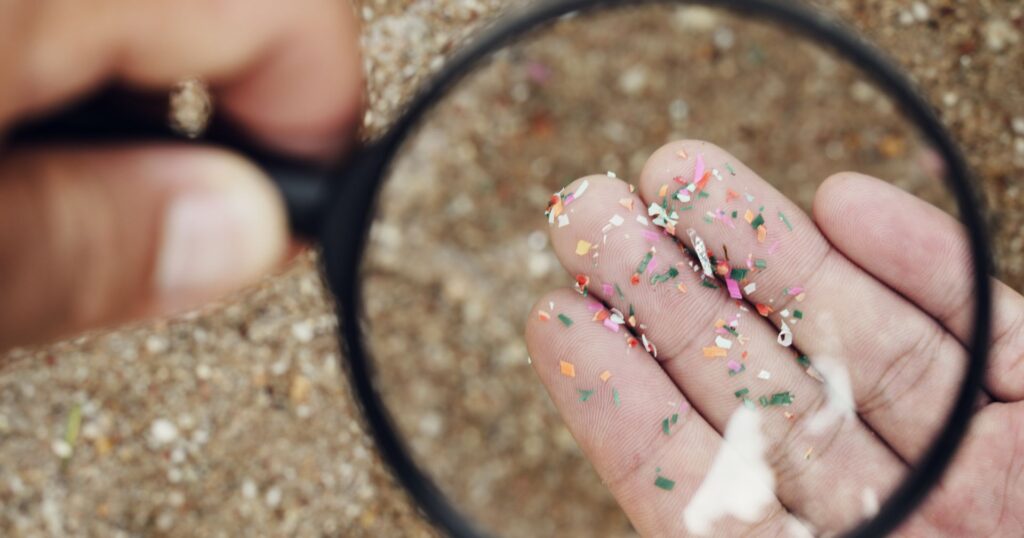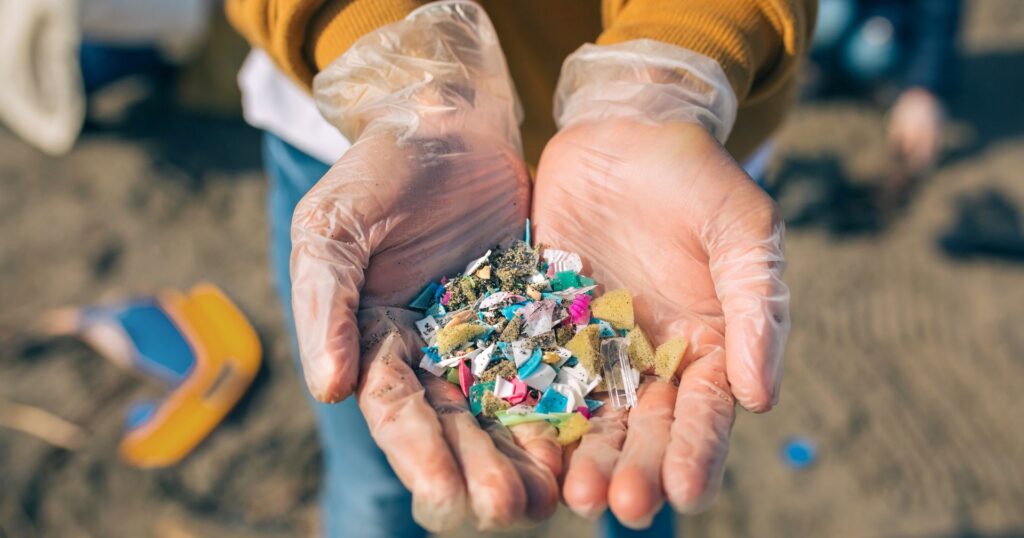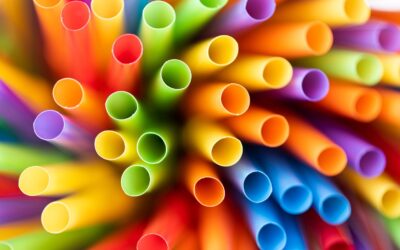We can find microplastics in humans, microplastics in food, and even in our environment. How big of a risk do microplastics pose?
In our modern, convenience-driven society, we are entwined with plastic in an almost inescapable bond. But this dependence comes at a high cost, a cost we are starting to realize through the prolific spread of microplastics.
Microplastics are silently finding their way into the environment, our food chain, and consequently our bodies, presenting a significant risk to our health and our planet. From the seafood on our plates to the water in our bottles, let’s dissect the risks, implications, and dangers of microplastics in humans, food, and the environment.
In this article:

What are microplastics?
Microplastics permeate nearly every corner of our planet. They’re tiny particles of plastic that measure less than five millimetres in diameter.
They originate from a variety of sources, including larger plastic debris that degrades into smaller and smaller pieces. A few examples include water bottles, plastic takeout containers, and even plastic-lined single-use coffee cups. Interestingly, microplastics can also be deliberately manufactured and included in products such as facial scrubs, shower gels, and toothpaste as exfoliators.
Microplastics fall into two categories – primary and secondary. Primary microplastics are those that are specifically designed to be small for industry usage, such as in cosmetics or air-blasting technology. On the other hand, secondary microplastics are the result of natural weather processes that break down larger pieces of plastic debris into smaller fragments.
These little plastic particles are not biodegradable and once they enter our environment, they are virtually impossible to remove. Consequently, they create long-standing and ever-increasing global environmental issues. From our kitchen salt to the water we drink, microplastics found their way relentlessly into our lives without us noticing.
Learn More: The BC Plastic Ban Breakdown
Unveiled Risk: Microplastics In Humans
The dangers of microplastics are not limited to marine life; they also affect human health. With the ubiquitous presence of plastics in our modern world, the correlation between microplastics in humans has become an area of growing concern.
These minuscule pieces of plastic have a tendency to find their way into the human system through various means: the air we breathe, the food we eat, and the water we drink.
The average person could consume or inhale more than 121,000 microplastic particles each year, suggesting a concerning prevalence of microplastics in humans. The exact implications on our health are still under research.
Inside the human body, microplastics carry the potential to cause an array of health disturbances. Not only do they act as carriers for harmful chemicals and pathogens, but certain plastics can also disrupt human hormones. This in turn can lead to a multitude of potential effects, from developmental and reproductive issues to neurological and immune disorders.
A few of the possible detrimental effects of microplastics in humans include:
Chemical Contamination
Microplastics can absorb harmful chemicals like persistent organic pollutants and heavy metals. When ingested, these chemicals can leach into our bodies, potentially causing toxicity and adverse health effects.
Inflammation and Tissue Damage
There is evidence to suggest that microplastics may cause inflammation and damage to internal tissues. This could contribute to various health issues, including gastrointestinal problems.
Immune System Disruption
Some studies have indicated that microplastics may impact the human immune system. The presence of these foreign particles may disrupt the body’s ability to respond to infections and diseases.

The Prevalence of Microplastics In Food
Microplastics in food have nearly become the norm. These tiny fragments of plastic have infiltrated our diet through a variety of foods and in various ways.
To begin, there is a disconcerting presence of microplastics in our seafood, with particles found in species including mussels, oysters, and fish. They have also been found in terrestrial food sources, such as agricultural soils that form the basis of our plant-based food items. From there, microplastics ultimately find their way into our fruits, vegetables, and grains.
We can also find microplastics in the meat we eat. Whether microplastics bleed into our food from plastic packaging or are littered in the grass the animals ingest, microplastics are in almost everything we eat.
Microplastics in food aren’t exclusive to naturally sourced items either. Even our bottled water and table salt have tested positive for microplastic content. The plastic takeout boxes or paper boxes lined with plastic also leak particles into meals, making microplastics in food practically inescapable.
Plastic cutting boards, cutlery, and dishes also allow for microplastics in food. Whether you’re slicing up the plastic or heating food up in it, microplastics shed easily.
And thanks to microplastics in food, humans eat roughly a credit card sized amount of these particles per week.

Environmental Impacts of Microplastics
Microplastics aren’t only encroaching on human health. These miniature fragments of plastic litter our landscape, permeate our soils, clog our waterways, and pervade our oceans too.
When it comes to bodies of water, from park ponds to our vast oceans, microplastics are a menace. At least 14 million tons of plastic waste finds its way into our seas each year, where it poses a deadly threat to marine life.
Sea birds, fish, marine mammals, and even microscopic zooplankton have all been found with microplastics in their system, often mistaking these particles for food. Once ingested, microplastics can cause physical harm and toxic effects, leading to a decline in species health and, in worst scenarios, death.
Microplastics are also damaging the earth under our feet. Soils around the world have been getting an unwanted infusion of these particles, primarily due to sewage sludge, composts, and mulches. The ecological consequences include decreased soil fertility and disruption to entire invertebrate populations, affecting worm communities that play a key role in the soil ecosystem.
These fragments are also a major contributor to climate change. When plastic degrades, it releases greenhouse gases, including methane, that exacerbate global warming. Ultimately, microplastics contribute to the climate crisis at each step of their existence – from production through to degradation.

Addressing the Dangers of Microplastics
The issue of microplastics in humans and the presence of microplastics in food derive from our escalating reliance on plastic and its disposal in the environment. Addressing these dangers requires a multidimensional approach that addresses various stages in the life cycle of plastic, from production to disposal.
Reduce Plastic Production at Its Source
Advocating for policies that limit the production of single-use plastic items can be instrumental in reducing overall plastic pollution. Encouraging businesses to adopt biodegradable alternatives for packaging and promoting the development of materials that present a smaller environmental footprint are viable strategies.
Learn More: 5 Innovative Sustainable Products for Restaurants
Reduce Reuse Recycle
To minimize our personal impact, we can opt for durable items made of materials like ceramic or metal, correctly recycle plastic, and fully utilize existing products before acquiring new ones.
Learn More: Recycling versus Composting: Which is better?
Increase Research
To address the danger of microplastics in humans, public and global health sectors should endeavor to increase research in this direction and consider microplastics as a potential risk factor for human health. This means comprehensive reporting and monitoring systems that can deliver ongoing insights.



